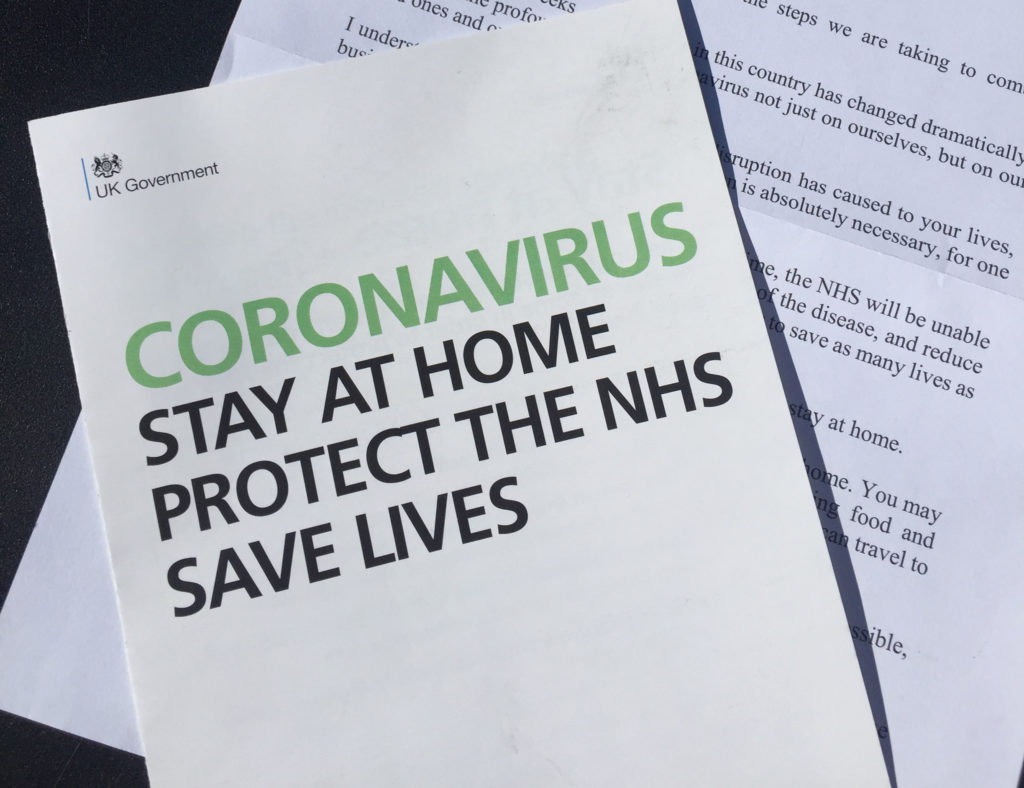We need to talk about vaccine hesitancy
Nick Witts, Copywriter and Editor at Alpharmaxim

Vaccines perhaps feel more familiar to us now than at any other point in our lives. Yet from the days of queueing for your tetanus jab in school to the television briefings on COVID-19, vaccines have been there; seemingly ever-present in the arsenal of protection against infectious disease, and one of the most important advances in modern medicine.1
So why – if vaccines can reduce the incidence of life-threatening illnesses and save millions of lives each year2 – are there individuals who either opt out of vaccination or prevent their children from being vaccinated? In the modern world, where we have seen so many upsides to immunisation, surely any form of hesitancy or rejection is illogical?
Well, not exactly. Vaccine decisions are still complex. Factors for consideration can have dual aspects and may be in flux, according to prominence in the news, social media and public health messaging.3 Such decisions are never made in a vacuum, and the information that we absorb (or don’t) has a clear impact.
Decision making and COVID-19 campaigns
The timeline of COVID-19 public safety campaigns that preceded the rollout of the vaccine in the UK shows how this can be the case.
For example, the podium message ‘Hands. Face. Space’ was an attempt to change our societal behaviours. It aimed to encourage more frequent hand washing, drive uptake of mask wearing (an unfamiliar concept in the UK at the time) and promote adherence to maintaining a two-metre distance from one another. However, this threefold message, targeting reported transmission routes, failed to strike a chord with the public. It lacked precision, raising too many changeable behaviours in one strapline and arguably introduced them in an order not reflective of the most effective ways of mitigating transmission of COVID-19.4 Should ‘Space’ or ‘Face’ not have been the key behaviour that needed to be targeted and brought to the fore?
This slogan was followed by a return to the UK Government’s earlier public information campaign strapline (‘Stay Home – Protect the NHS – Save Lives), which offered more instructive, unambiguous messaging. It included the reason for the required behaviour change at the heart of the message and drew parallels with the ‘blitz spirit’, as people across society made sacrifices to help prevent the NHS becoming overwhelmed during the early stages of the pandemic.

This campaign was recommended by the Independent Scientific Pandemic Group on Behaviours, advising the UK Government, as a framing that would resonate with the UK public.5 And it did. It worked well and provided clarity. That’s why, after the UK Government launched campaigns that featured less effective straplines (e.g. ‘Stay Alert – Control the Virus – Save Lives’), it returned to the original, more directive slogan in January 2021.
Lack of clear scientific vaccine information
Understanding benefit versus risk

As we look to the future and see the potential introduction of mRNA vaccines that may treat cancers such as melanoma,14 we should consider how benefit versus risk will be perceived. For example, in a study of 157 patients with Stage III/IV melanoma whose tumours were surgically removed, serious drug-related side effects occurred in 14.4% of patients who were treated with a combination of the mRNA vaccine and immunotherapy.15 Would this prompt hesitancy over such mRNA cancer vaccines, or does the benefit still outweigh the risk?
What’s the motivation?
Sometimes, does the benefit of being vaccinated diminish or disappear for those who are hesitant? Do vaccines become victims of their own success as they reduce the number of cases of infectious disease circulating in the community, creating complacency over the threats you should be protected against?
Polio virus, for example, was on the brink of global eradication, with just 195 cases detected in 2019, yet it has now seen a level of re-emergence, with cases detected in the UK and the US.16 The fact that there’s been a lack of visibility of polio in communities is likely to have affected motivation to be vaccinated. “These days many young parents haven’t seen polio, it isn’t part of their consciousness,” states Dr Marny Eulberg, a retired physician and polio survivor who has studied the disease.16
“These days many young parents haven’t seen polio, it isn’t part of their consciousness”
Dr Marny Eulberg, Retired physician and Polio survivor
So, will our attitude to COVID-19 head in the same direction? In the initial days of the COVID-19 pandemic, many of us were motivated, both by the idea of the personal benefits of vaccination and by the sense that we were helping to protect the wider community, especially those who were vulnerable.
But, as the pandemic wore on, motivational factors influencing vaccination behaviour changed. Altruism was joined by external factors. With many craving a return to normality, is it not likely that COVID-19 travel mandates played a similarly strong role in driving uptake? The data seems to suggest just that.17
Ensuring access and availability

That means removing barriers and ensuring that motivation to get vaccinated remains unimpeded, giving a platform for positive behaviours. That covers everything from guaranteeing the availability of convenient times to be vaccinated, ensuring that individuals don’t have to travel huge distances, to keeping vaccines fairly and equitably priced.
While we understand that vaccine hesitancy may be caused by a range of factors, it remains just as complex – but nonetheless critical, being recognised as one of the top ten threats to global health in recent years by the World Health Organization.20 That’s why we must continue to ask: How can we address barriers to vaccine uptake? How can we ensure that seasonal, travel and paediatric vaccines remain a key asset in our healthcare system? And what models and methods can help bring about long-term vaccine success, altering the beliefs of those who remain hesitant? The answers to these questions, understood through the lens of behavioural science, may be vital to planning future vaccine campaigns and strengthening our healthcare capabilities.
References
1. Amanna IJ, Slifka MK. Successful vaccines. Curr Top Microbiol Immunol 2020;428:1–30
2. Arbel R, Moore CM, Sergienko R, Pliskin J. How many lives do COVID vaccines save? Evidence from Israel. Am J Infect Control 2022;50(3):258–261
3. MacDonald NE; SAGE Working Group on Vaccine Hesitancy. Vaccine hesitancy: definition, scope and determinants. Vaccine 2015;33(34):4161–4164
4. Science Media Centre. Expert reaction to new public information campaign from UK government to prevent spread of COVID-19 indoors this winter. 9 September 2020. https://www.sciencemediacentre.org/expert-reaction-to-new-public-information-campaign-from-uk-government-to-prevent-spread-of-covid-19-indoors-this-winter/. Accessed 13 February 2023
5. LSE. Finding the trees in the wood: behavioural science and the UK’s response to COVID-19. 28 May 2020. https://blogs.lse.ac.uk/politicsandpolicy/behavioural-science-covid19-response. Accessed 13 February 2023
6. Wilder-Smith A. What is the vaccine effect on reducing transmission in the context of the SARS-CoV-2 delta variant? Lancet Infect Dis 2022;22(2):152–153
7. Gamble VN. Under the shadow of Tuskegee: African Americans and health care. Am J Public Health 1997;87(11):1773–1778
8. Forster AS, Rockliffe L, Chorley AJ, et al. Ethnicity-specific factors influencing childhood immunisation decisions among Black and Asian Minority Ethnic groups in the UK: a systematic review of qualitative research. J Epidemiol Community Health 2017;71(6):544–549
9. Shearn C, Krockow EM. Reasons for COVID-19 vaccine hesitancy in ethnic minority groups: A systematic review and thematic synthesis of initial attitudes in qualitative research. Elsevier Public Health Emergency Collection 2023; 100210
10. Nguyen KH, Srivastav A, Lindley MC, et al. Parental vaccine hesitancy and association with childhood diphtheria, tetanus toxoid, and acellular pertussis; measles, mumps, and rubella; rotavirus; and combined 7-series vaccination. Am J Prev Med 2022;62(3):367–376
11. Baker JP. Mercury, vaccines, and autism: one controversy, three histories. Am J Public Health 2008;98(2):244–253
12. Pennington M. Vaccine Hesitancy: A Story as Old as Vaccines Themselves. Eureka. 29 July 2021. https://www.criver.com/eureka/vaccine-hesitancy-story-old-vaccines-themselves. Accessed 16 February 2023
13. UK Health Security Agency. Laboratory confirmed cases of pertussis in England: annual report for 2021. Updated 6 July 2022. https://www.gov.uk/government/publications/pertussis-laboratory-confirmed-cases-reported-in-england-2021/laboratory-confirmed-cases-of-pertussis-in-england-annual-report-for-2021. Accessed 8 February 2023
14. O’Brian MR. Moderna’s experimental cancer vaccine treats but doesn’t prevent melanoma – a biochemist explains how it works. The Conversation. 17 January 2023. https://theconversation.com/modernas-experimental-cancer-vaccine-treats-but-doesnt-prevent-melanoma-a-biochemist-explains-how-it-works-197003. Accessed 8 February 2023
15. Steenhuysen J, Erman M. Positive Moderna, Merck cancer vaccine data advances mRNA promise, shares rise. Reuters. 13 December 2022. https://www.reuters.com/business/healthcare-pharmaceuticals/moderna-merck-vaccine-combo-cut-melanoma-recurrence-by-44-study-2022-12-13/. Accessed 8 February 2023
16. Financial Times. Polio virus reappears in rich economies, exposing gaps in immunisation. 13 August 2022. https://www.ft.com/content/c0c4c976-4482-4513-9d41-6ce83ee7a388. Accessed 10 February 2023
17. Mills MC, Rüttenauer T. The effect of mandatory COVID-19 certificates on vaccine uptake: synthetic-control modelling of six countries. Lancet Public Health 2022;7(1):e15–22
18. SAGE Working Group. Report of the SAGE Working Group on vaccine hesitancy. 12 November 2014. https://www.asset-scienceinsociety.eu/sites/default/files/sage_working_group_revised_report_vaccine_hesitancy.pdf. Accessed 8 February 2023
19. Public Health England. Strategy to increase uptake and equity of access to the COVID19 vaccine. February 2021. https://www.england.nhs.uk/south/wp-content/uploads/sites/6/2021/04/SW-COVID-Uptake-Strategy-FINAL.pdf. Accessed 8 February 2023
20. World Health Organization. Ten threats to global health in 2019. 2019. https://www.who.int/news-room/spotlight/ten-threats-to-global-health-in-2019. Accessed 9 February 2023


